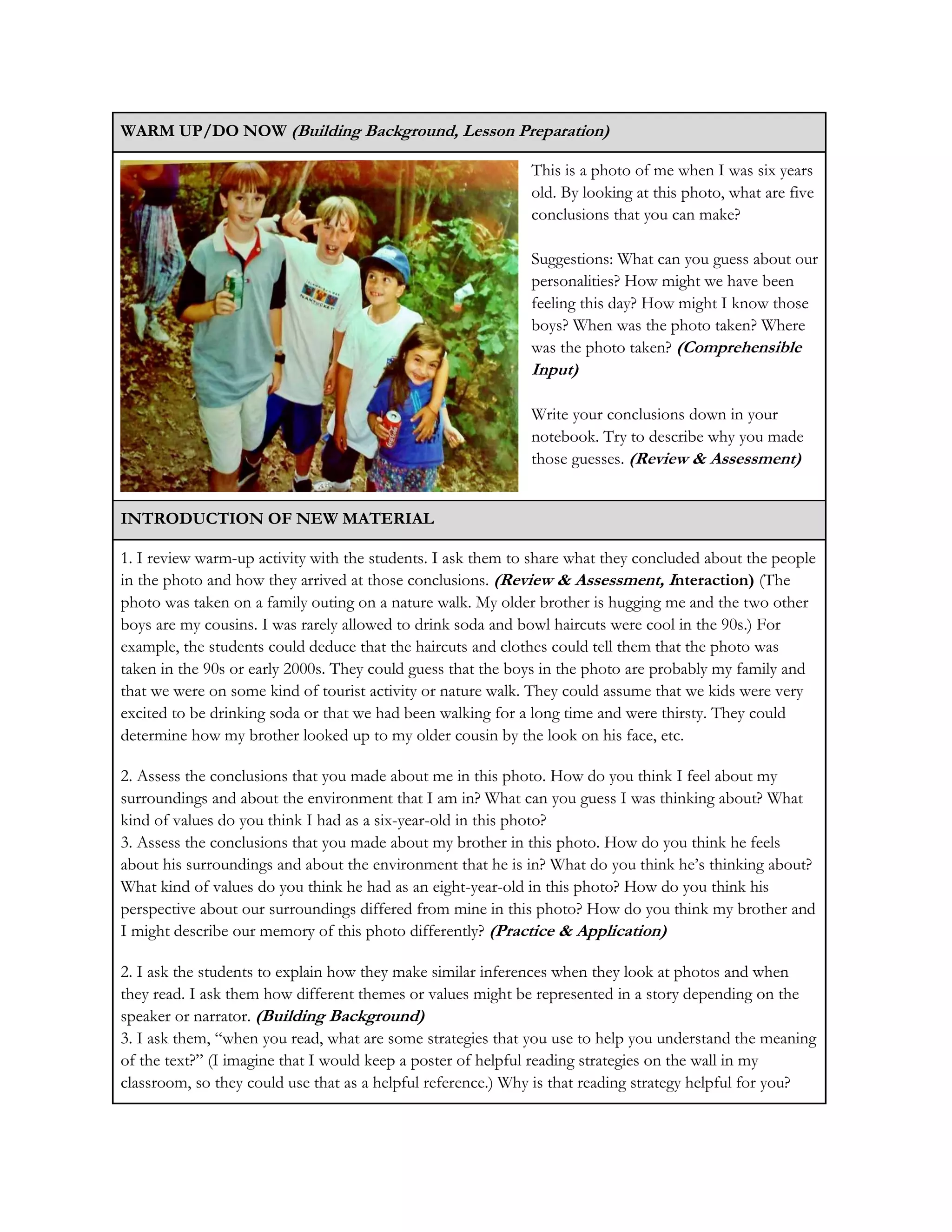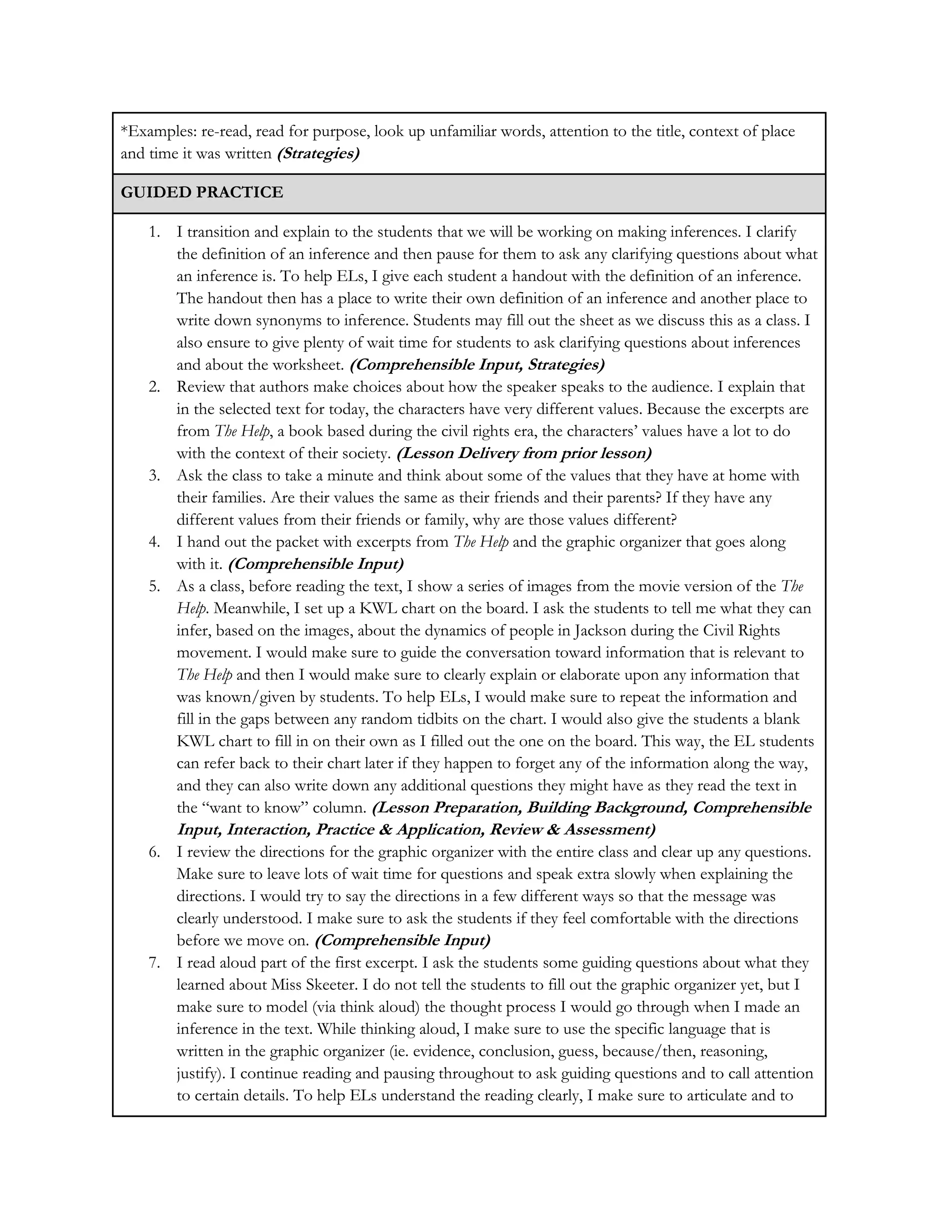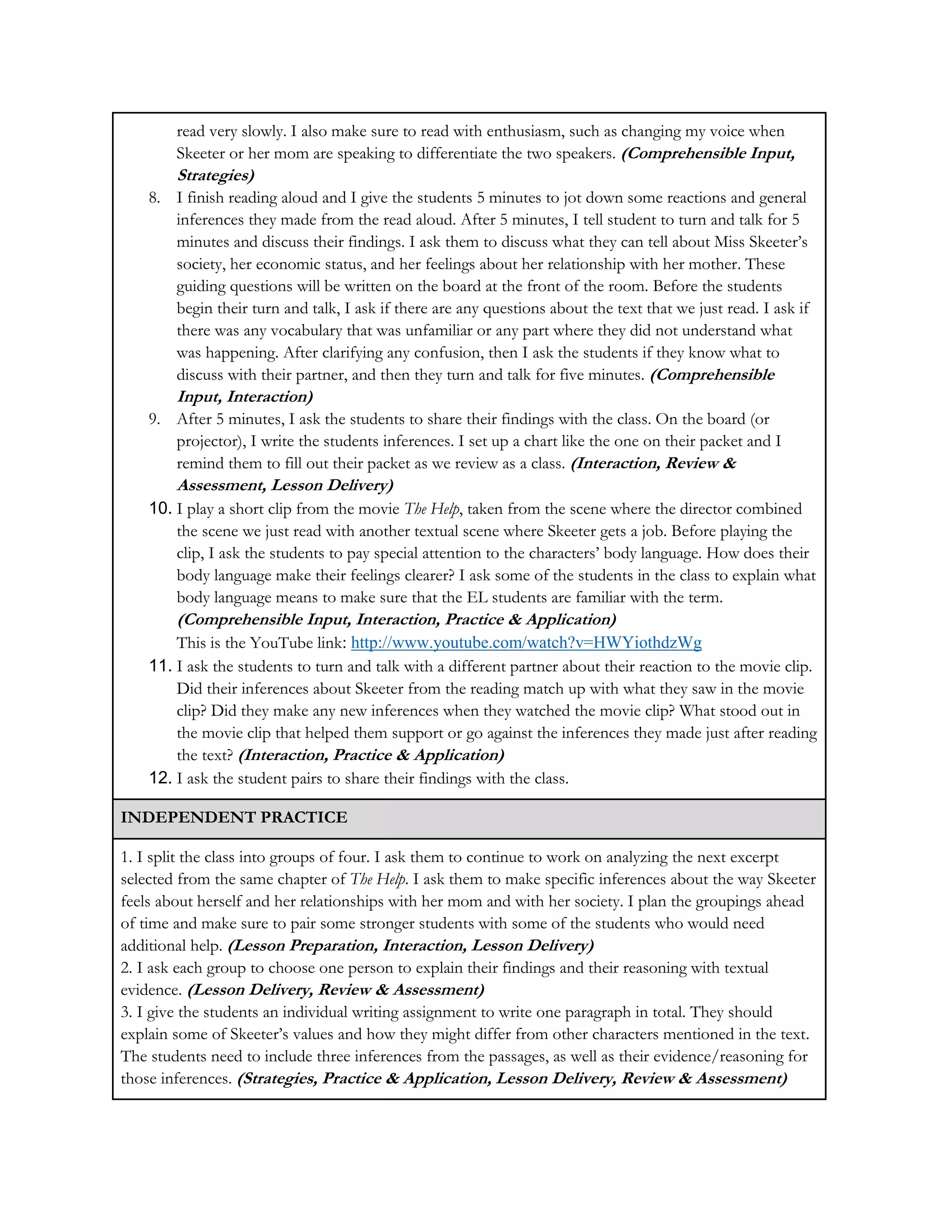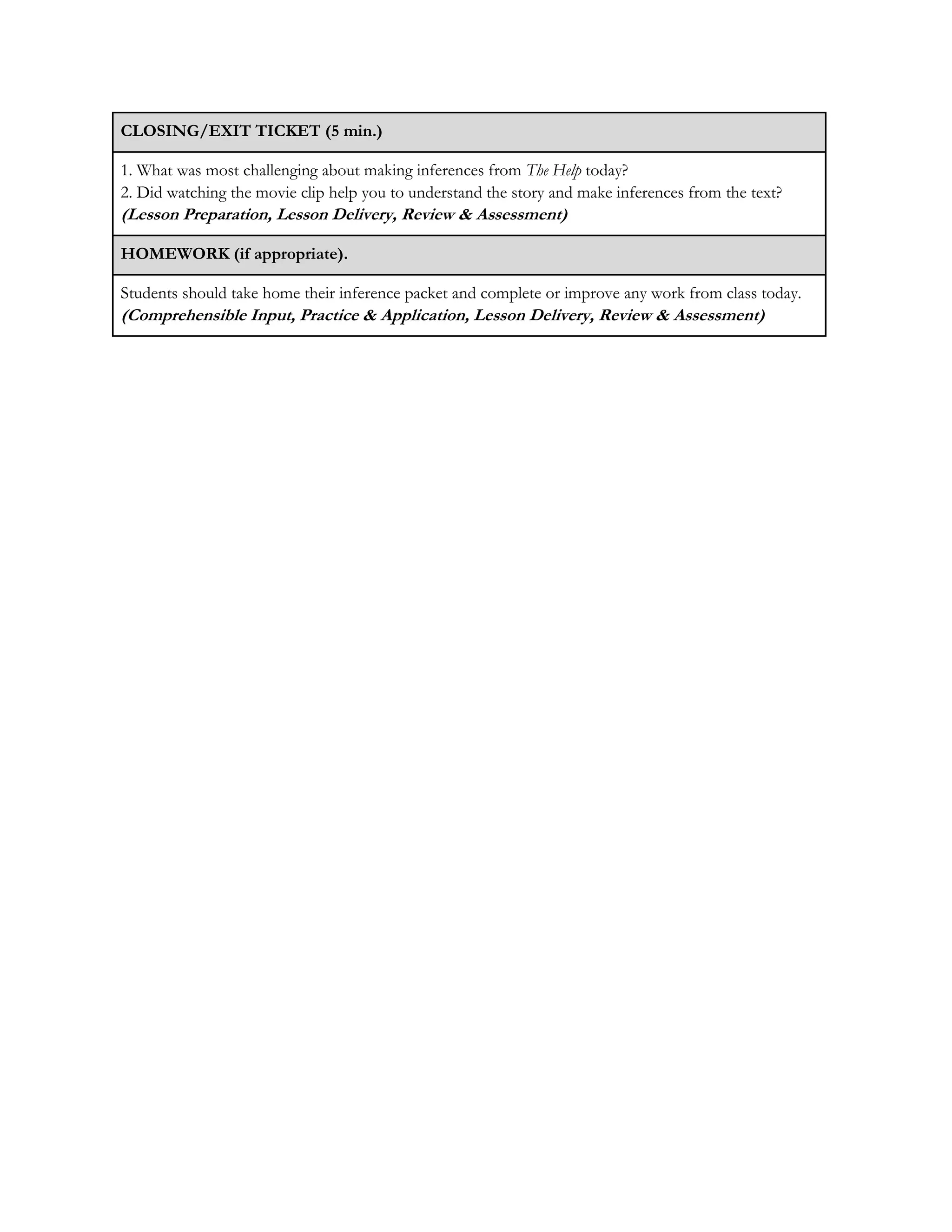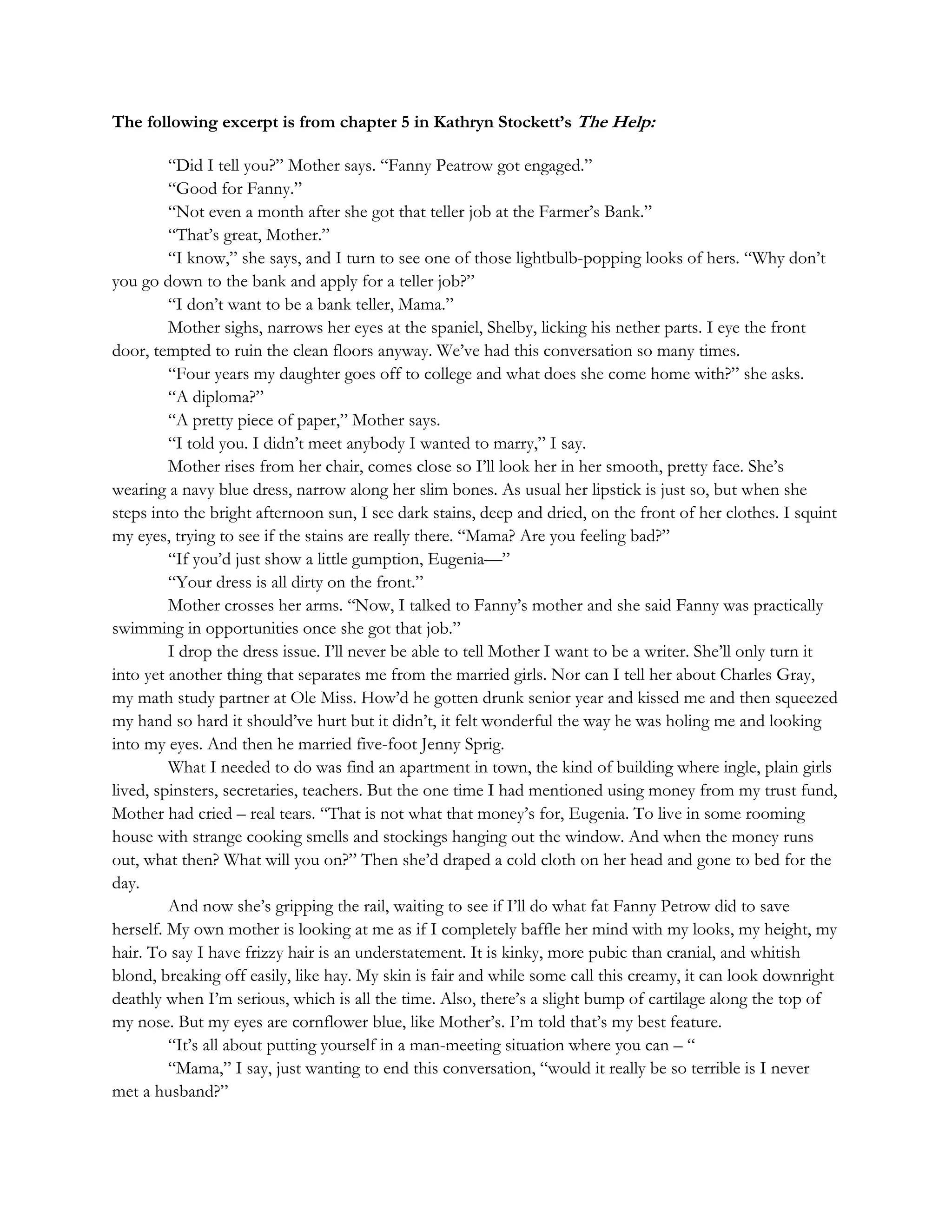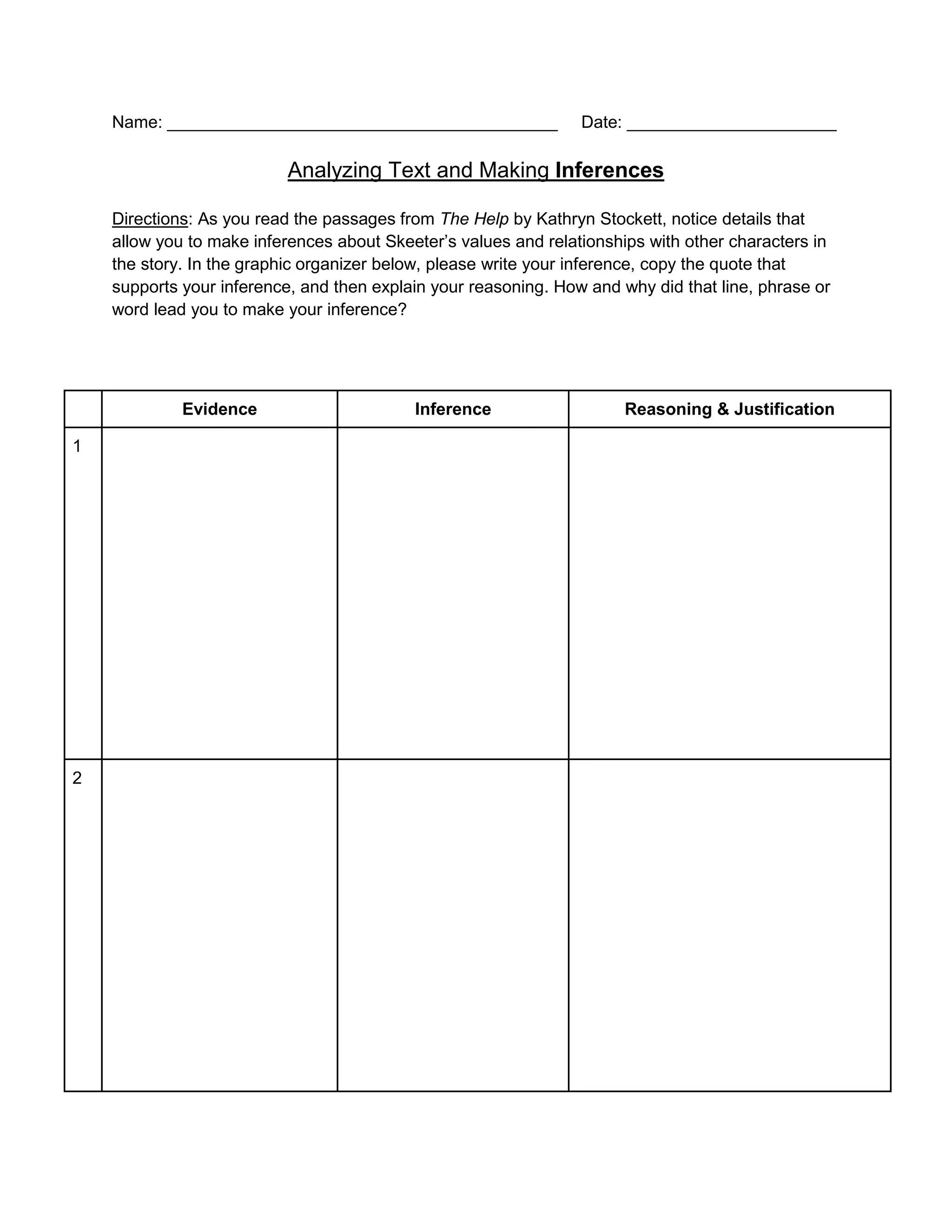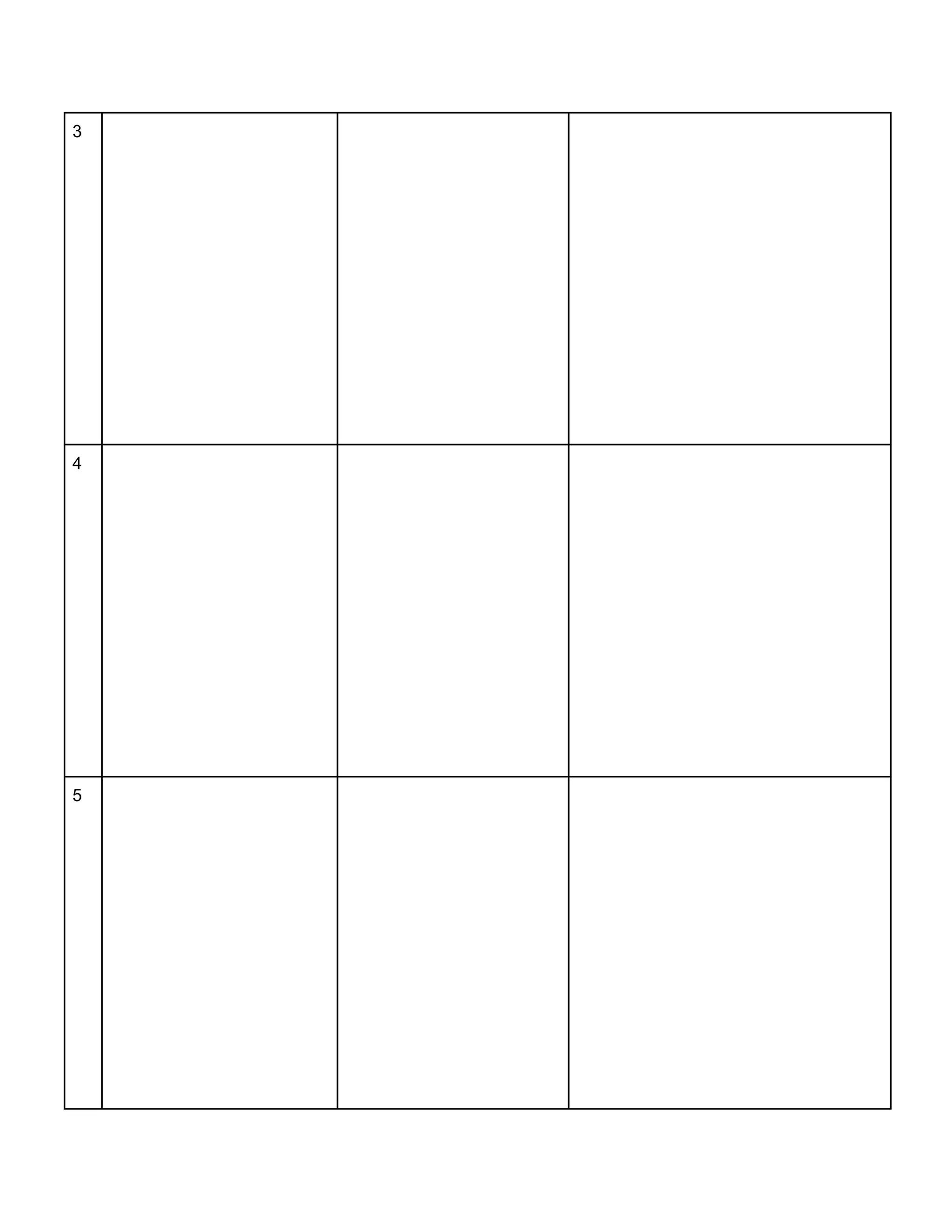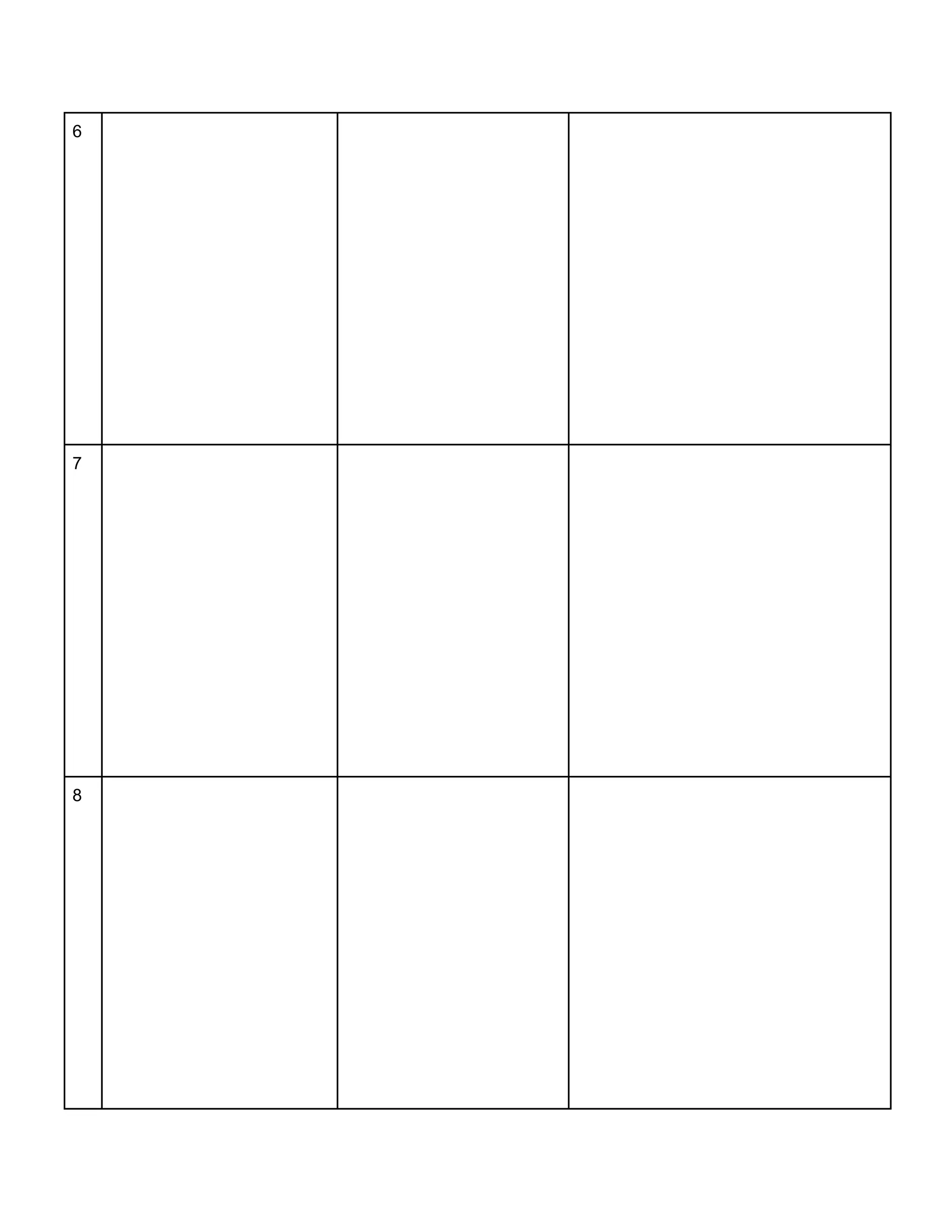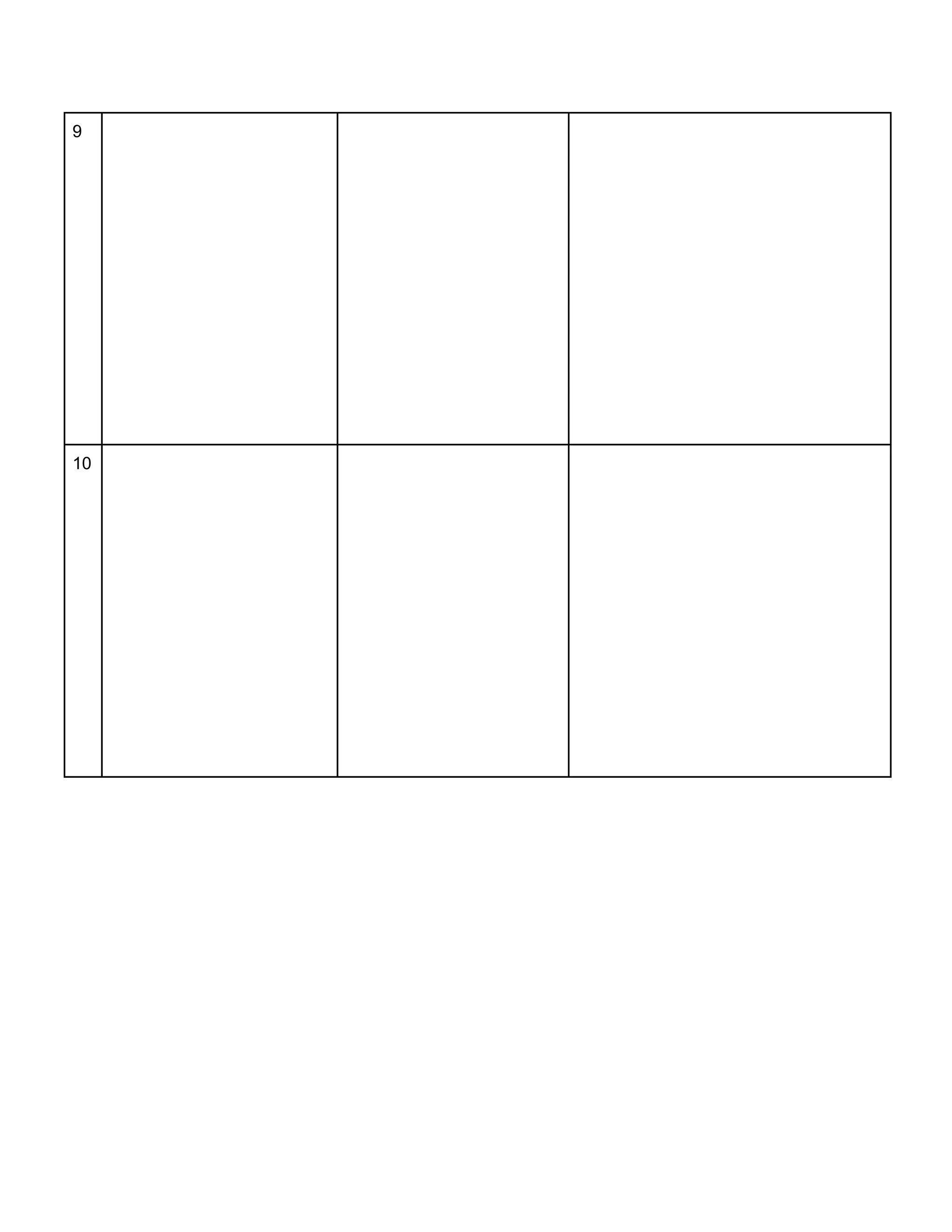This lesson plan is for analyzing inferences in The Help. The objectives are for students to make inferences about the speaker Skeeter and her relationships, and to articulate their thinking process when making inferences. Students will complete a graphic organizer analyzing the text. The assessment is aligned to state standards for reading closely, interpreting words and phrases, and assessing point of view. The lesson includes building background about making inferences from photos. Students will read excerpts and discuss inferences about Skeeter's society and relationships through turn and talk. The teacher will model inference making and ask guiding questions to support comprehension.

